Novo Nordisk, Eli Lilly fall after Trump comments on weight loss drug pricing
Stock investors have been joyously discounting a Fed rate cut in September following the release of July’s weaker-than-expected employment report. The S&P 500 rose to yet another record high on Thursday.
It is up 3.4% since the close on August 1—the day of the disappointing jobs report—through Friday’s close. There hasn’t been a similar party in the bond market since then, as the 10-year Treasury yield has risen 10 basis points over the same period (Fig. 6).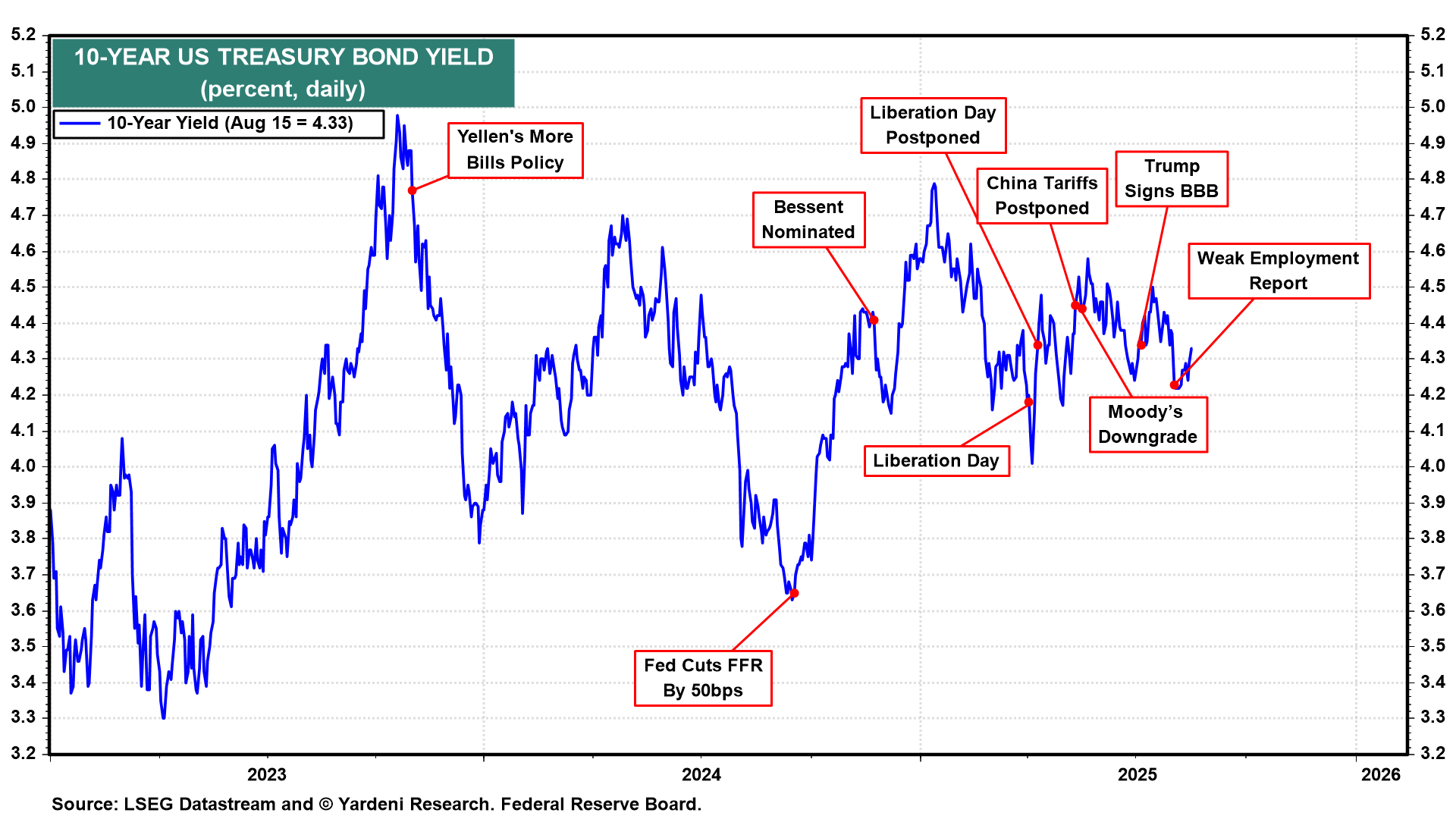
Notwithstanding my concerns about an adverse bond market reaction to a Fed rate cut in September, I am not as sure about what the bond yield will do as I am about what stock prices will do. Stocks will rise on expectations of another rate cut before the end of the year. What could be a better development for the stock market than another Fed Put when the economy doesn’t need the Fed’s help?!
In this scenario, the Fed could very well fuel a wild meltup in the stock market. Valuation multiples would get even more stretched than they are already. On a weekly basis, the Buffett Ratio rose to a record 3.1 during the August 14 week using the forward price-to-sales ratio of the S&P 500 (Fig. 7).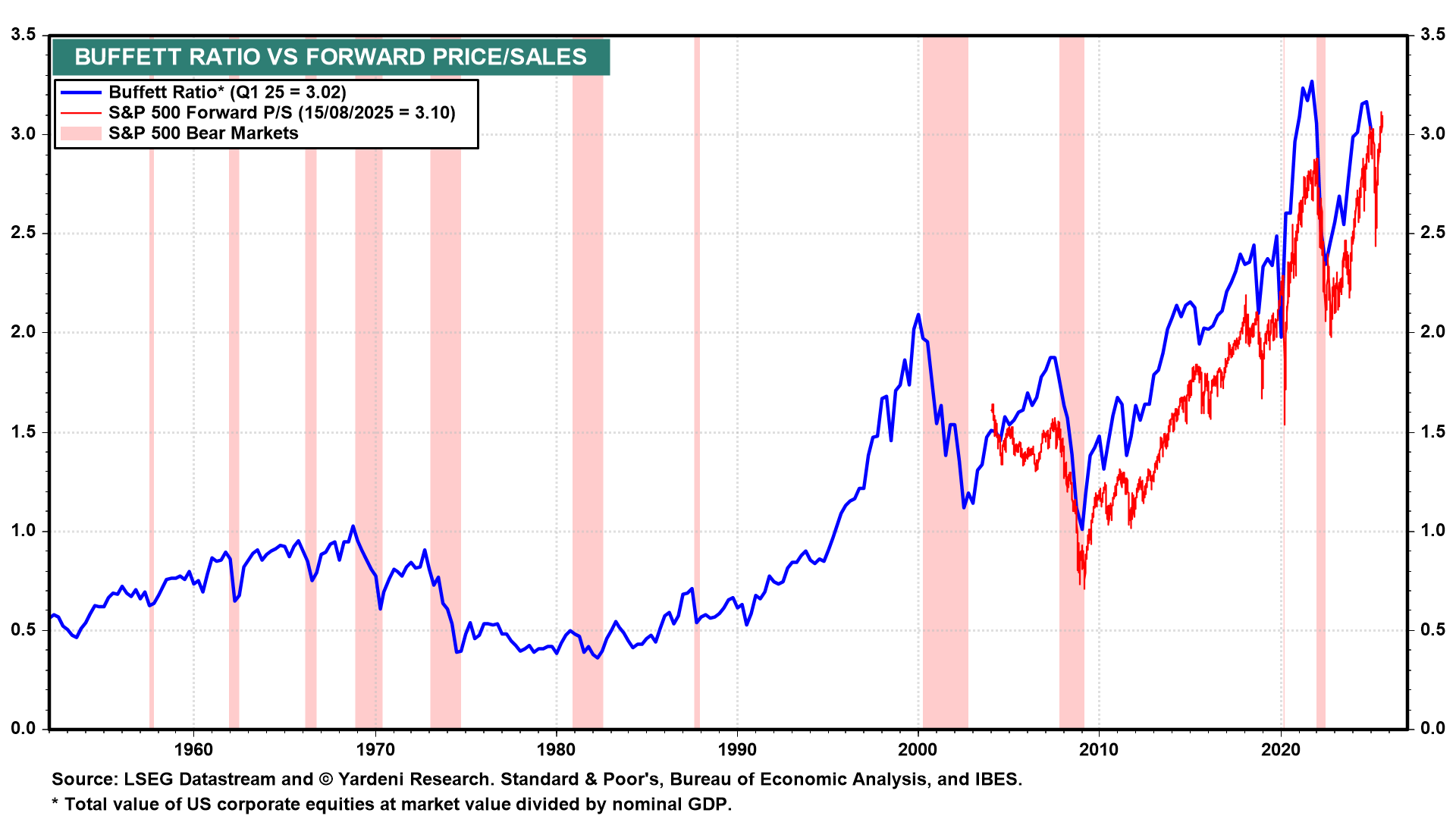
That same week, the forward P/E of the index rose to 22.5 (Fig. 8). It would need to rise only another 11% to match its record high of 25.0, hit just before the Tech Wreck of 2000.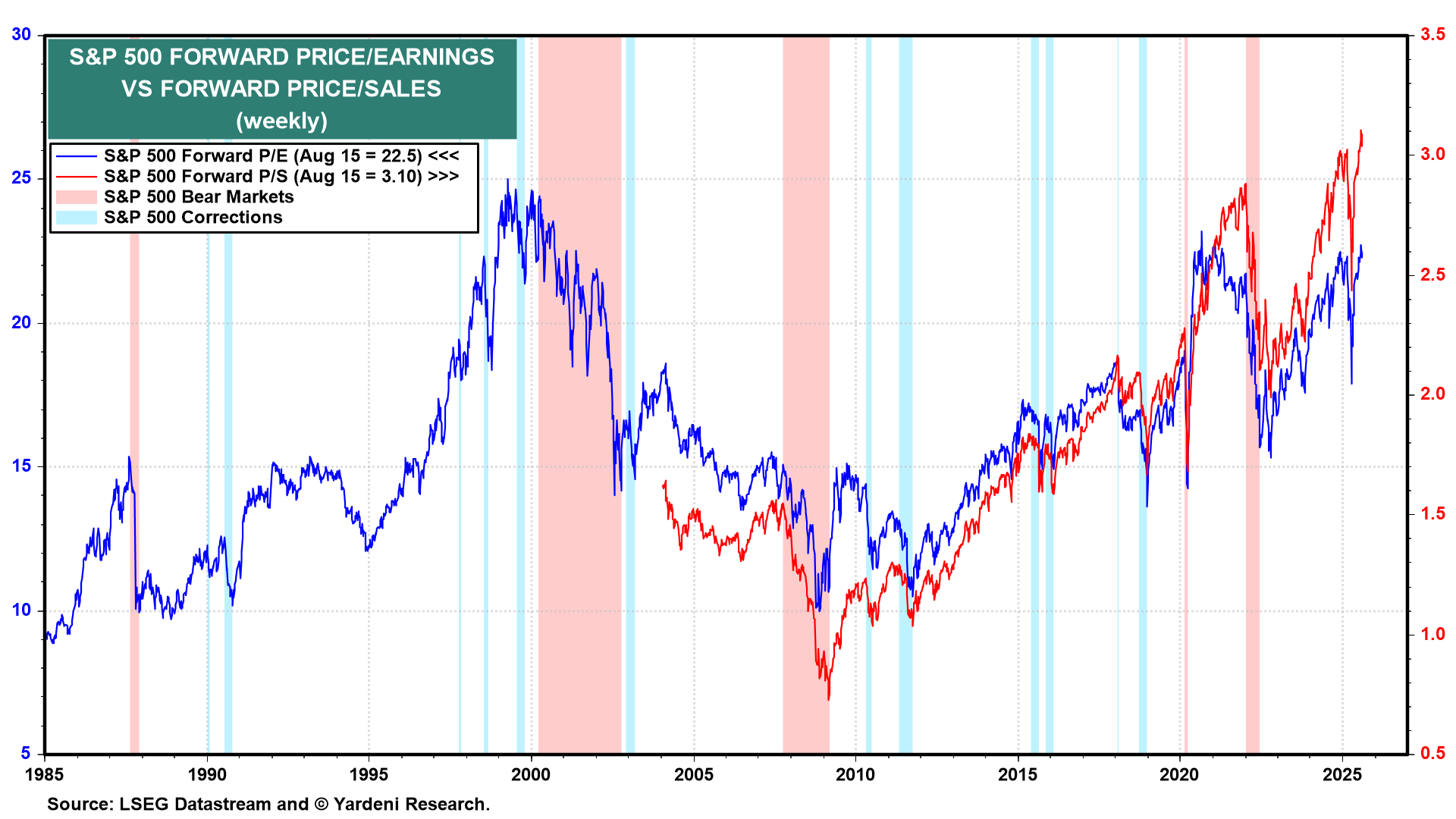
For stock investors, the only problem with meltups is that they are followed by meltdowns. The classic example that many of us experienced was the Tech Bubble of the late 1990s, which was followed by the Tech Wreck bear market of the early 2000s.
Meltdowns aren’t always severe enough to qualify as bear markets. Last year’s meltup was led by technology stocks, especially the ones related to AI. That meltup was followed by a bear market in the S&P 500 Information Technology sector, but just a correction in the overall S&P 500. The sector dropped 25.9% from February 19 through April 8, while the S&P 500 fell 18.9%. Since then, the sector is up 50.7% and the S&P 500 is up 28.2% through Friday’s close.
For the Fed, a stock market meltup increases the likelihood of financial instability. The Fed’s legal mandate is to keep both unemployment and inflation rates low. To do so requires financial stability. That should be the Fed’s third mandate since the Fed originally was created to avert financial crises.
Latest Data Don’t Warrant Easing
If the Fed eases in September, it will be because of July’s weak employment report. It included a shocker: downward revisions in May and June payroll gains of only 19,000 and 14,000.
Compared to those two, July’s increase of 73,000 is a hopeful sign of a recovery following a couple of months when Trump’s Tariff Turmoil (TTT) might have depressed employers’ hiring. If TTT was the cause of the payroll weakness, then August’s employment report should show a gain of closer to 100,000.
In the past, the Fed usually lowered the FFR aggressively when initial unemployment claims soared (Fig. 9).
That happened during recessions. This time, there is no recession, and layoffs remain subdued along with initial claims. The main problem in the labor market is that the duration of unemployment is increasing. It is taking longer for the unemployed to find jobs (Fig. 10). That might be increasingly attributable to automation, especially in services such as restaurants. AI may also be starting to reduce the demand for labor.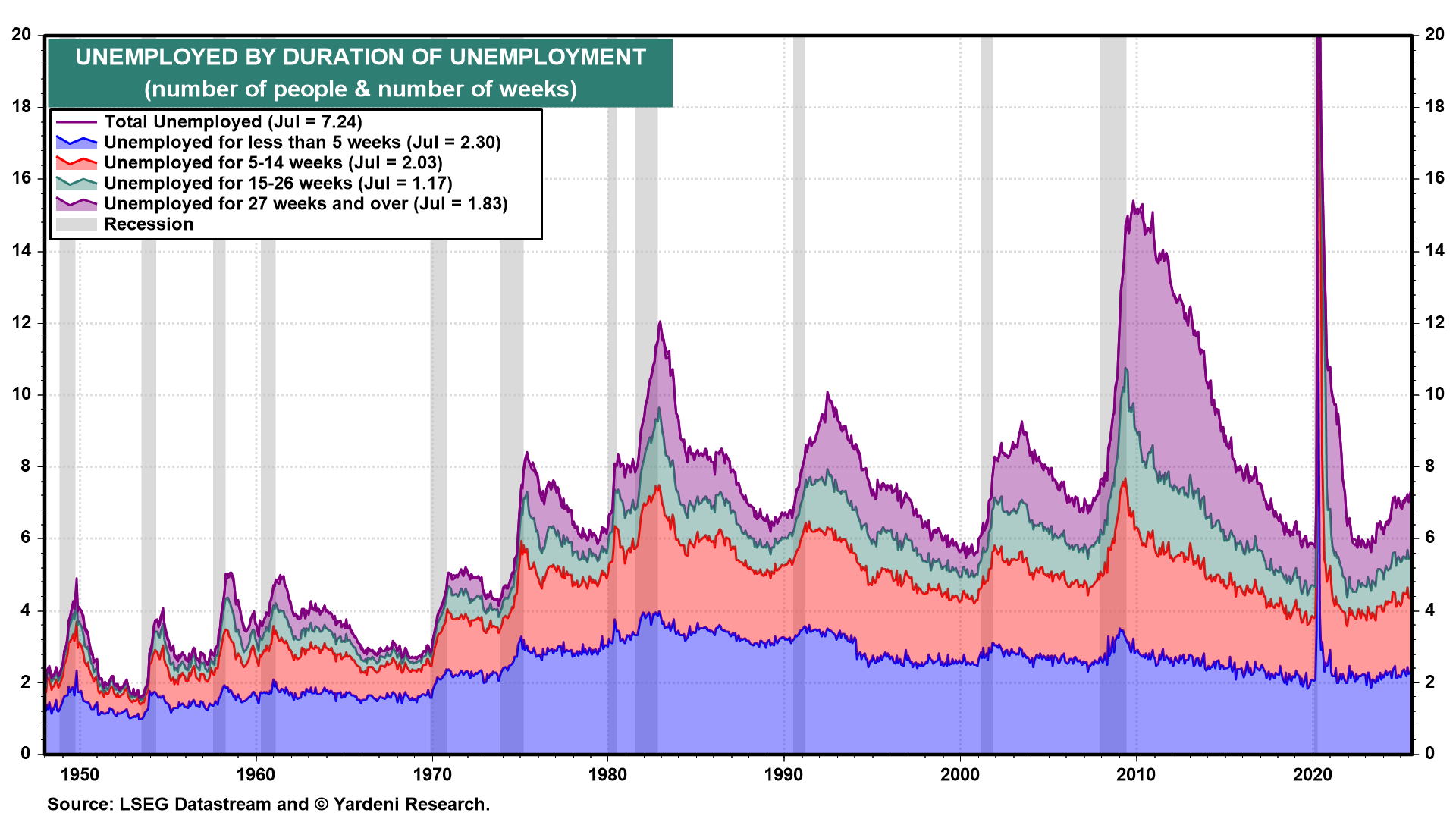
Meanwhile, Friday’s release of July’s retail sales data showed an increase of 0.5% m/m and an upward revision in June’s sales increase from 0.6% to 0.9% (Fig. 11).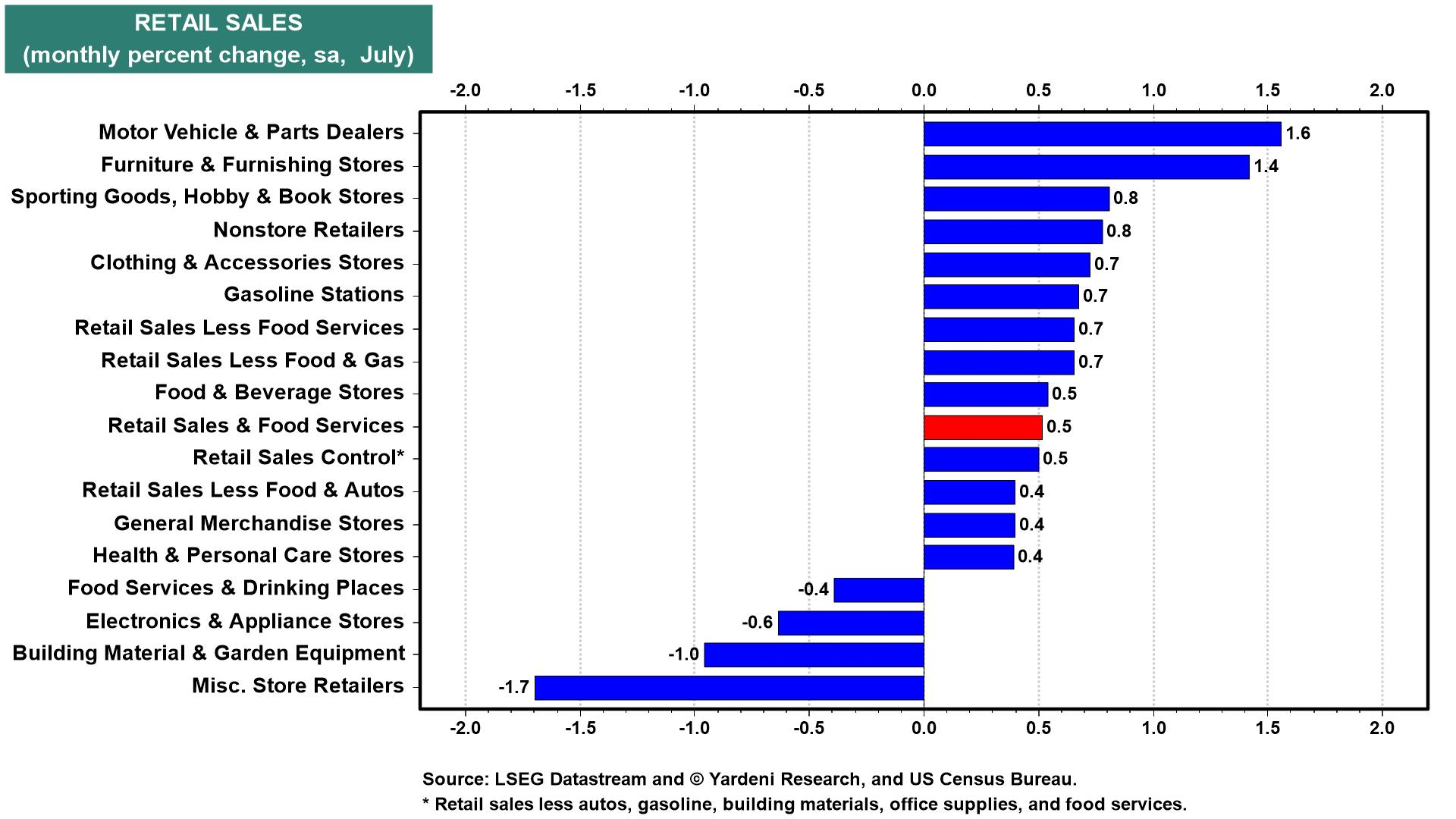
The Atlanta Fed’s GDPNow model showed that real GDP is tracking at 2.5% (saar), while real consumer spending is growing at 2.2% (saar) (Fig. 12). There is no significant sign of consumer distress in either the unemployment claims or retail sales data that warrants a Fed rate cut in September.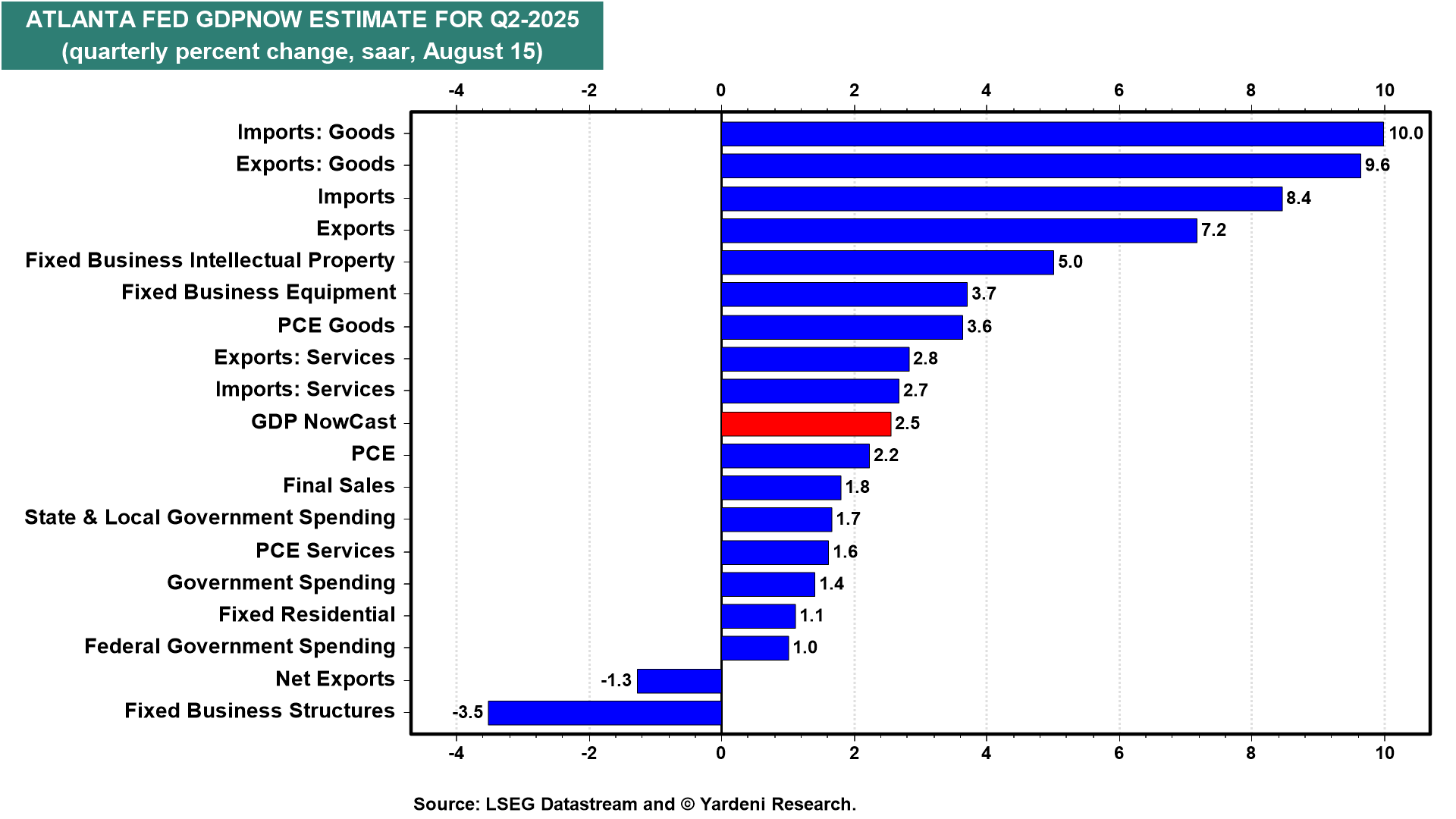
On the inflation front, July’s CPI and PPI confirm our view that while Trump’s tariffs aren’t pushing inflation higher (so far), they may have caused inflation to stall around 3.0% y/y rather than falling to the Fed’s 2.0% target. The tariffs may have a transitory impact on goods inflation, but meanwhile services inflation seems to be heating up a bit. Consider the following:
1. CPI
Trump’s tariffs undoubtedly have boosted the CPI durable goods inflation rate from last year’s low of -4.2% y/y in August 2024 to 1.2% in July (Fig. 13).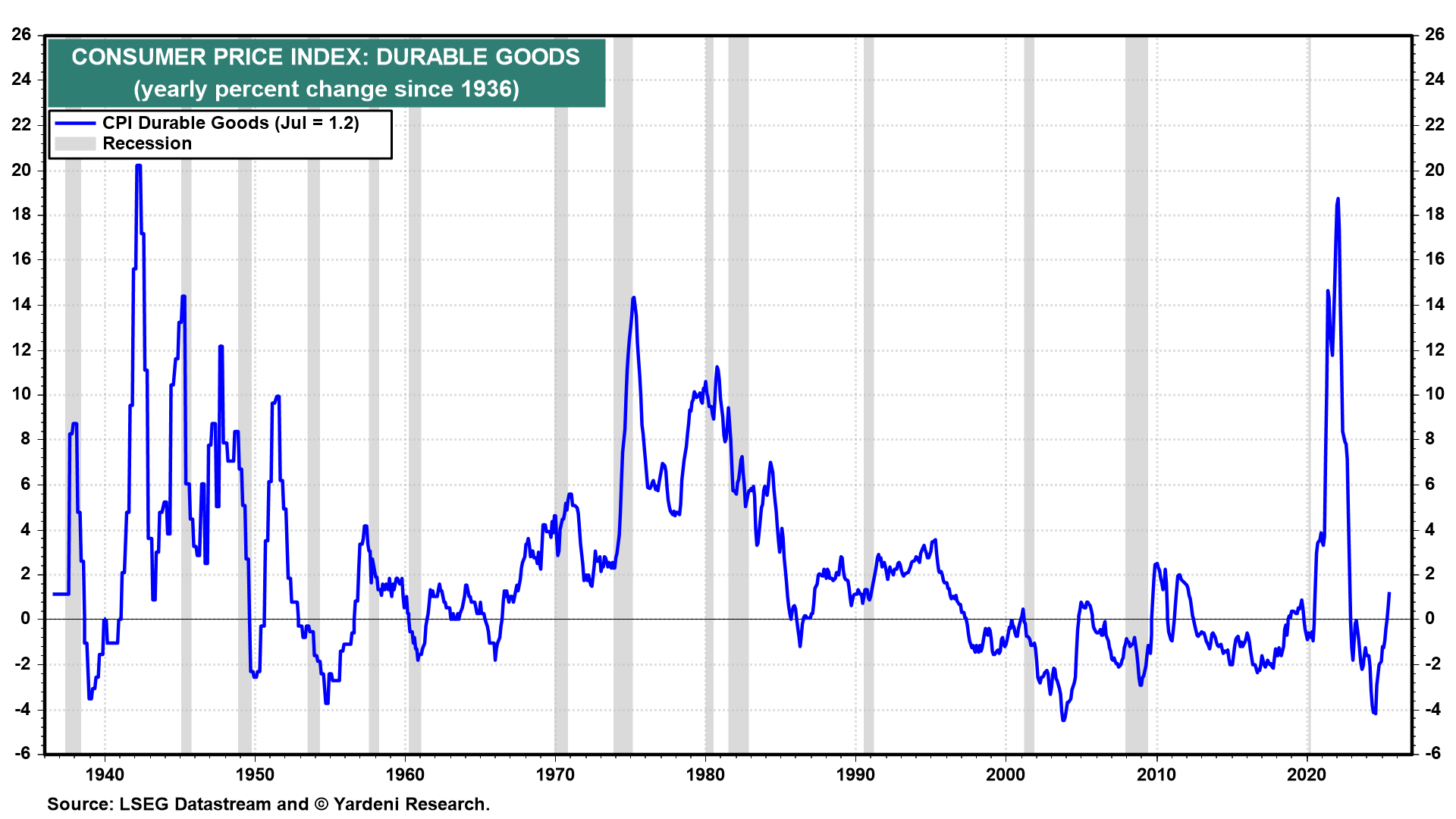
Similarly, the core CPI goods inflation rate rose from -1.6% y/y to 1.2% over this same period (Fig. 14).
The core CPI services inflation rate stalled at 3.6% y/y during July (Fig. 15).
The CPI services inflation rate excluding rent of shelter edged up to 4.0%. Several components of the CPI services inflation rate remain elevated (especially compared to the Fed’s 2.0% overall inflation target): other personal services (4.5%), medical & care services (4.3%), recreation services (3.9%), rent of shelter (3.6%), transportation services (3.5%), and education & communication services (1.1%) (Fig. 16).
2. PPI
The core PPI final demand personal consumption increased 3.6% y/y in July, boosted by a 5.8% m/m jump in portfolio management fees (Fig. 17).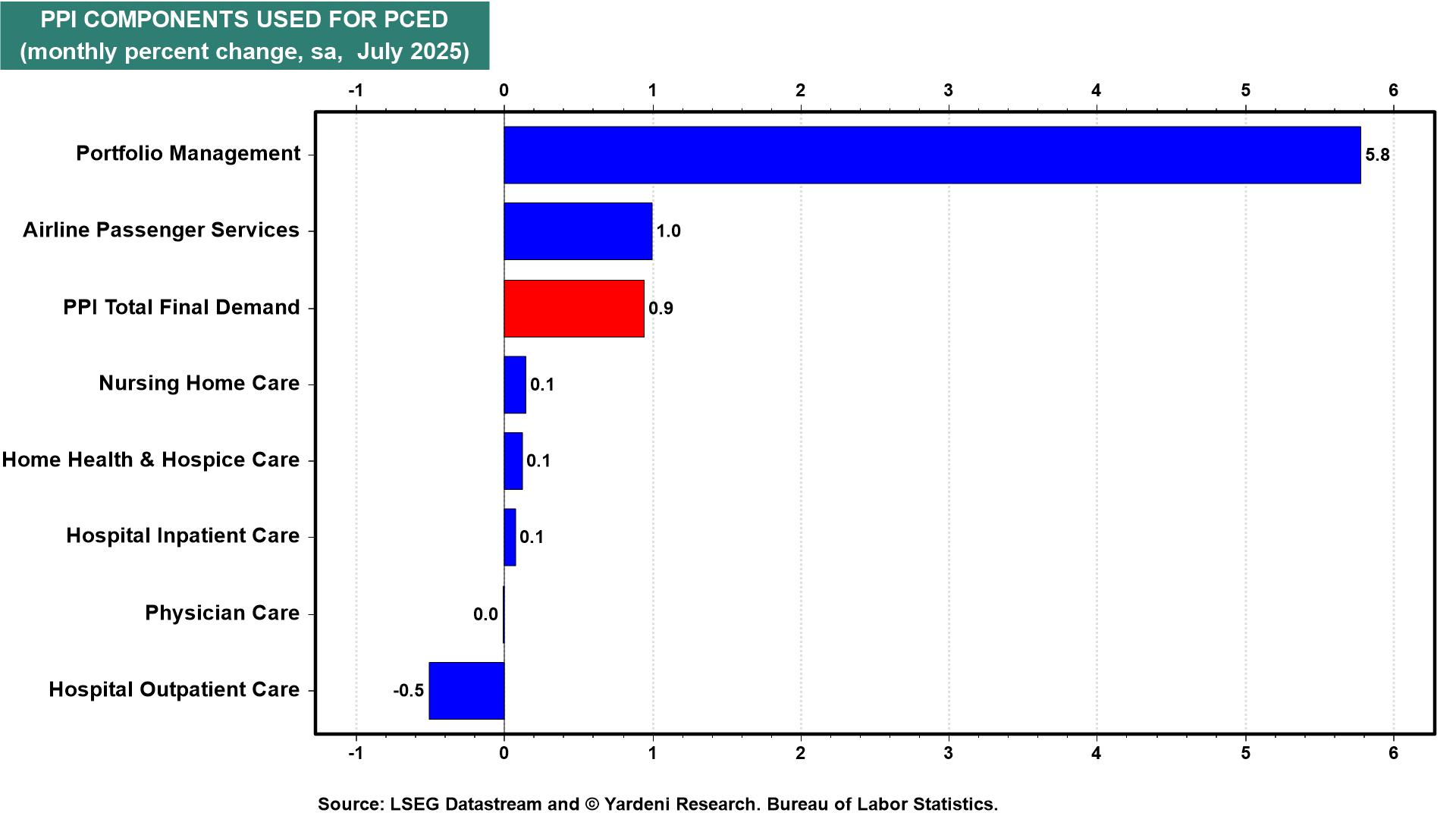
July’s core CPI inflation rate was 3.0% y/y. We conclude that the core PCED inflation rate likely rose from 2.8% in June to 3.0% in July (Fig. 18).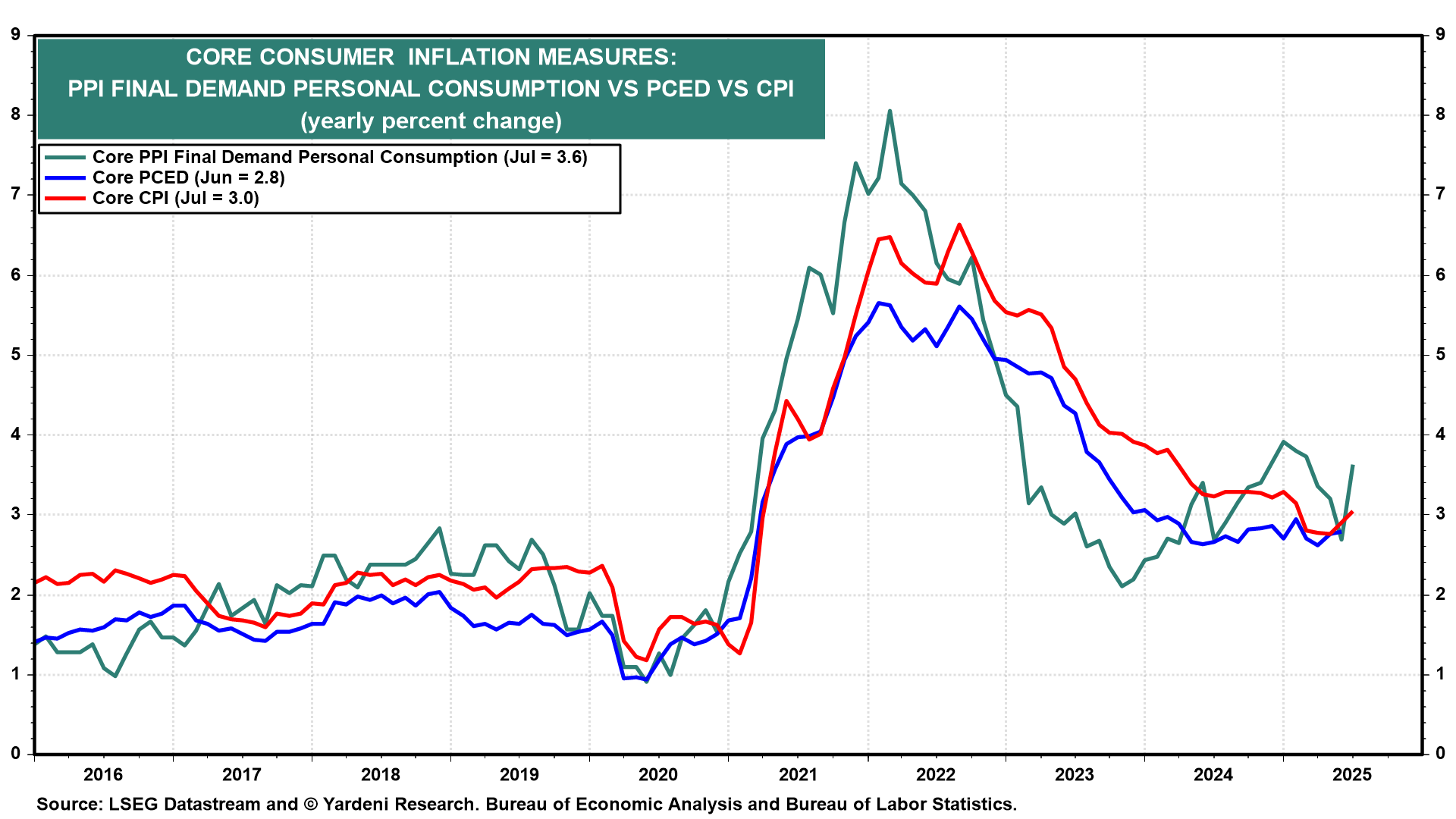
The latest inflation data along with the latest economic indicators don’t justify Fed rate cutting in September. If saying that disqualifies me from being considered as a candidate to be the next Fed chair, so be it. I’ll just keep plugging away at my day job and watch the Fed from afar.
